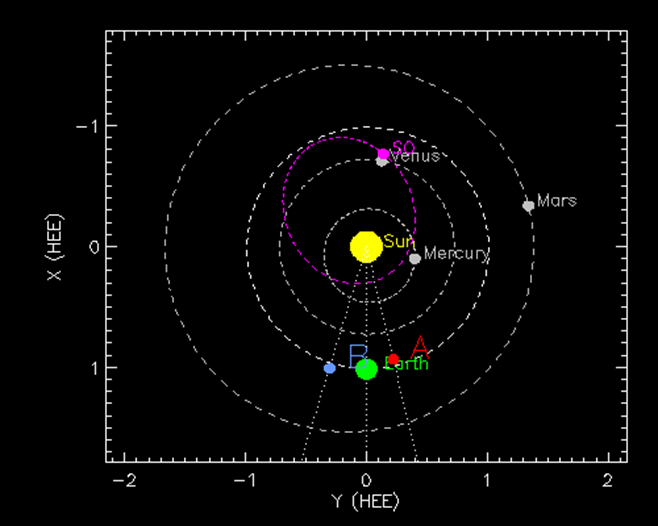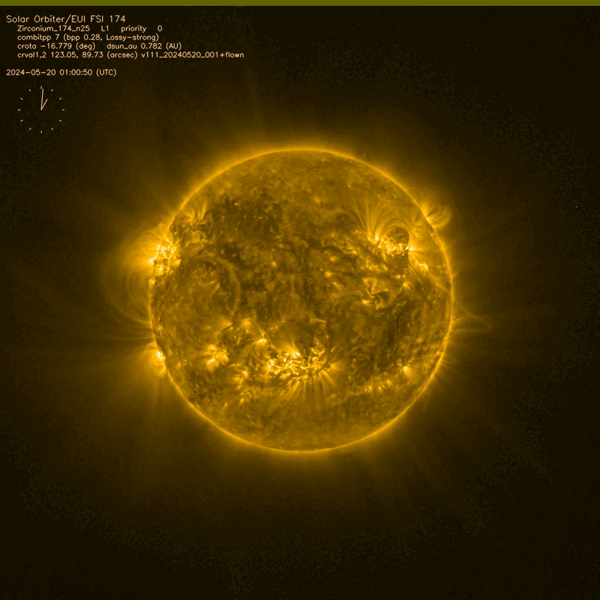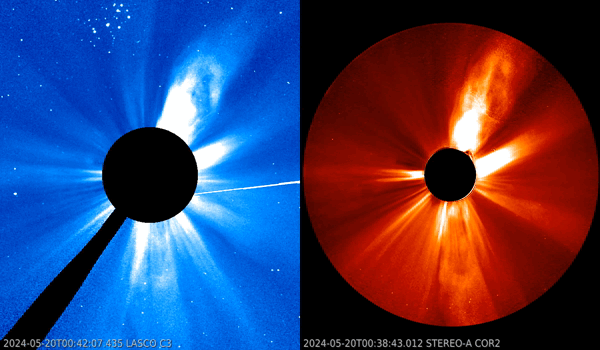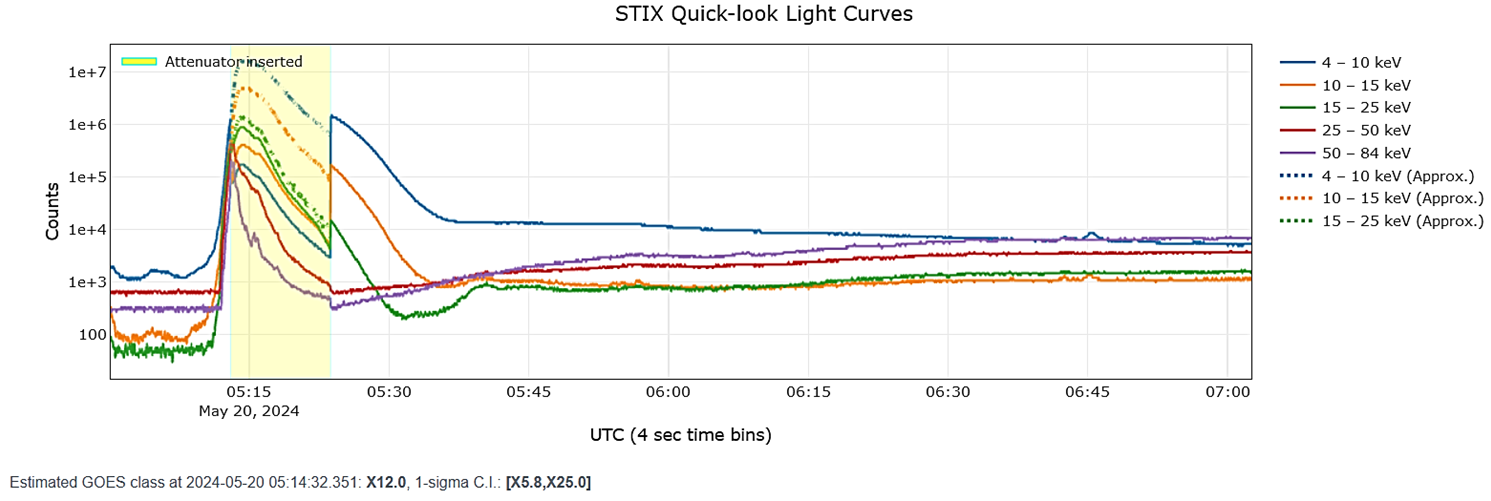NOAA 3664 was rounding the southwest solar limb on 14 May when it produced the strongest solar flare so far this solar cycle (SC25), an X8.7 (see this STCE newsitem). At that time, it was already the third X-class event in less than 24 hours, so the source region clearly did not show signs of quieting down. Instead, during the subsequent days, more coronal mass ejections (CMEs) could be seen appearing from behind the west limb, a clear indication that NOAA 3664 continued its eruptive activity while transiting the farside of the Sun.

As such, the active region rotated into view of the solar telescopes on board Solar Orbiter, which was located on the other side of the Sun as seen from Earth. The map above shows the position of the Earth ("Earth", green), Solar orbiter ("SO", magenta), and STEREO-A ("A", red) with respect to the Sun. On 20 May, NOAA 3664 was located almost diametrically opposed to the Earth, and on the central meridian of the Sun as seen from Solar Orbiter. Around 05 UTC on 20 May, the region produced a strong solar flare, as observed with the Full Sun Imager (FSI ; Rochus et al. 2020) on board Solar Orbiter. The images underneath were taken using the 17.4 nm filter (FSI 174) and show the flare near its peak (left). The flare doesn't look that spectacular, but this is due entirely to the design of the instrument that basically prevents the blooming pattern that can often be seen in flare imagery from e.g. SDO and STEREO (see this STCE newsitem), and thus allows for a much more detailed study of the flaring region. The flare got accompanied by an impressive and wide coronal dimming, as can be discerned in the two images to the right (screenshot) which are from before (03:20UTC, upper right) and after the solar flare (06:00UTC, lower right), as well as in this truly astonishing movie.

The strong flare was associated with a small enhancement of the proton flux observed by the GOES around Earth, despite the poor magnetic connection between NOAA 3664 (farside) and Earth (see the space weather briefing in the STCE Newsletter of 31 May). An impressive halo coronal mass ejection (CME) was observed by coronagraphs on board SOHO (left) and STEREO-A (right), as shown in the imagery underneath. CACTus reported a plane-of-the-sky speed for this CME of 750 km/s, obviously directed away from the Earth. Note that STEREO-A is preceding Earth by about 13 degrees.

With NOAA 3664 on the farside, GOES can't make measurements of the soft x-ray (SXR) intensity of the flares produced by this region. Fortunately, scientists are very creative in using observations from any spacecraft that is monitoring the Sun's farside as a proxy for the GOES measurements. In this case, Solar Orbiter was on the right place. The Spectrometer Telescope for Imaging X-rays (STIX ; Krucker et al. 2020) on Solar Orbiter is a hard X-ray (HXR) imaging spectrometer, covering the energy range from 4 to 150 keV, therefore providing diagnostics of the hottest plasmas in solar flares. An "attenuator", i.e. a movable aluminum tool that can be inserted during high-rate periods (Figure 11 in Krucker et al. 2020), can be used to further limit the detectors' exposure to high fluxes of low energy flare X-rays (compared to high-energy X-rays). Hence, STIX' HXR measurements can of course not directly be compared to the GOES' SXR recordings, but given enough statistics the STIX readings can be correlated and used to provide an estimated value of the GOES SXR intensity, very similar to e.g. GOES and PROBA2/LYRA. Thus, ESA scientists (ESA newsitem) ) concluded that, based on the STIX observations shown underneath (STIX data Center), the eruption in NOAA 3664 reached an estimated GOES SXR intensity between X5.8 and X25, with X12 the most likely value. This would make it the strongest solar flare so far this solar cycle (SC25), and brings it into the Top 30 of strongest solar flares observed since 1976 when the GOES measurements started.

The situation is very similar as during SC24, when on 20 September 2012 a very powerful flare was detected by the STEREO-B spacecraft on the Sun's farside. Various analyses (Nitta et al. 2013 ; Chertok et al. 2015) suggest that this flare had an estimated GOES intensity of X12, within a range of X6-X18 (uncorrected, downscaled GOES-values ; see this NGDC/NOAA bulletin). This would basically make it the strongest solar flare of SC24, the largest -by GOES observed- being the X9.3 flare on 6 September 2017 (STCE newsitem). The imagery underneath shows extreme ultraviolet images of the 20 September 2012 flare taken by STEREO-B/EUVI 195.
